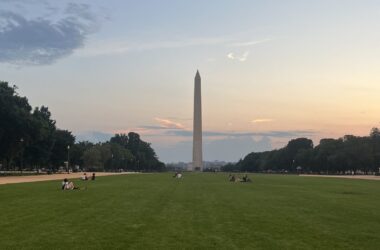
I’ve always thought the generic soft-pop music played in department stores and supermarkets works fairly well to calm shoppers. It lulls you into a peaceful state, and is never catchy enough to excite you. But on Black Friday, in America, it’s useless. Stores might as well blast Metallica or angsty-screamo-punk to accompany what amounts to frantic looting, albeit with paying involved. To call the Black Friday shopping frenzy simply consumerism doesn’t come close to doing it justice. With this in mind let’s walk through the chaos (and sometimes violence) of this post-Thanksgiving “holiday.”
Black Friday falls on the day after American Thanksgiving. Department stores and small retailers alike drop prices like hotcakes to kick off the Christmas shopping season. Since many people don’t work on the days around Thanksgiving (except those in retail positions), the phenomenon is bolstered by the sheer unbeatable volume of shopping bodies. Mobs of deal-seekers line up for blocks in the wee hours of the morning outside of Macy’s, Filene’s, Target, Sears, and especially Wal-Mart, then flood the gleaming aisles, arms outstretched to snatch the nearest perfume or socks.
The day’s nomenclature refers to the unrivaled period of profit retailers experience in the month-long run up to Christmas, which makes their accounting books turn from red to black. On the surface, there is nothing inherently wrong with such a nationwide shopping spree. Any economist looking at the American recession right now would say that people need to spend in order for the economy to grow. But the day has become glorified, turned into a blind activity about objects, not the people on the other end of gifts.
In 2008, nearly 2,000 people clamored at the doors of a New York Wal-Mart in the early hours of the morning. Before it was to open at 5:00 am, eager shoppers couldn’t restrain themselves and broke through the doors. An employee, attempting to reason with the onslaught, was caught underfoot and killed. Every year some record of assault surfaces, and firearms are often involved. These incidents are isolated, but are indicative of Black Friday: when the goods are up for grabs, the American shopper cannot be stopped.
Black Friday should make us think about our definition of “holiday.” The month between the end of November and January 1st is marked with celebration in the U.S. Thanksgiving, Channukah, Kwanzaa, Christmas, and New Years keep families gathered around tables, laughing, eating, and drinking. Yet only on Black Friday do hundreds of thousands of people wake up before dawn and congregate to engage in a common pursuit—it’s a mass participation event regularly reserved for a holiday.
Perhaps I shouldn’t be so hard on the day. In a different light, Black Friday shows us the need to both give and receive; to interact reciprocally with those around us, be they friends, family, or complete strangers. In this way, its timing is perfect. While Thanksgiving is about gratitude, the shift toward presents and giving is evident as December rolls on.
At any rate, if there’s a message you should take from these ramblings, it’s to go home and watch or read How the Grinch Stole Christmas. And if you find yourself in a florescent aisle of the Bay in the coming months, despairing and frantic, remember the Grinch and his heart two sizes too small, who realized the best gifts don’t come from the mall.








